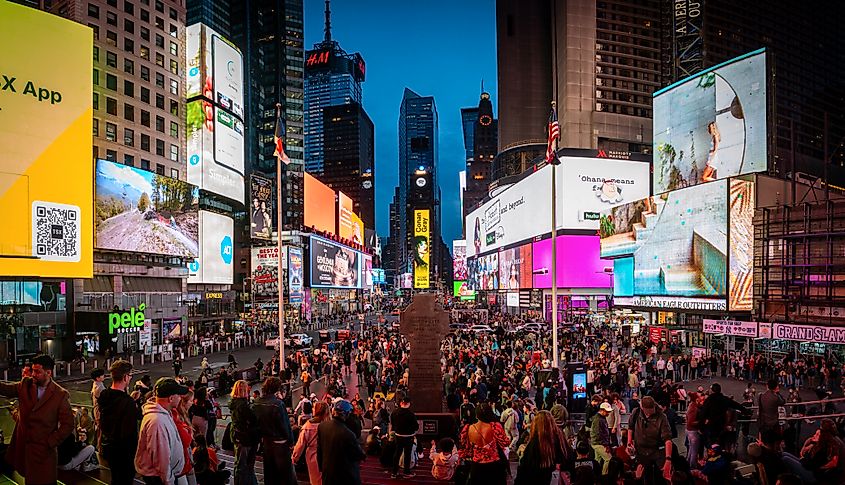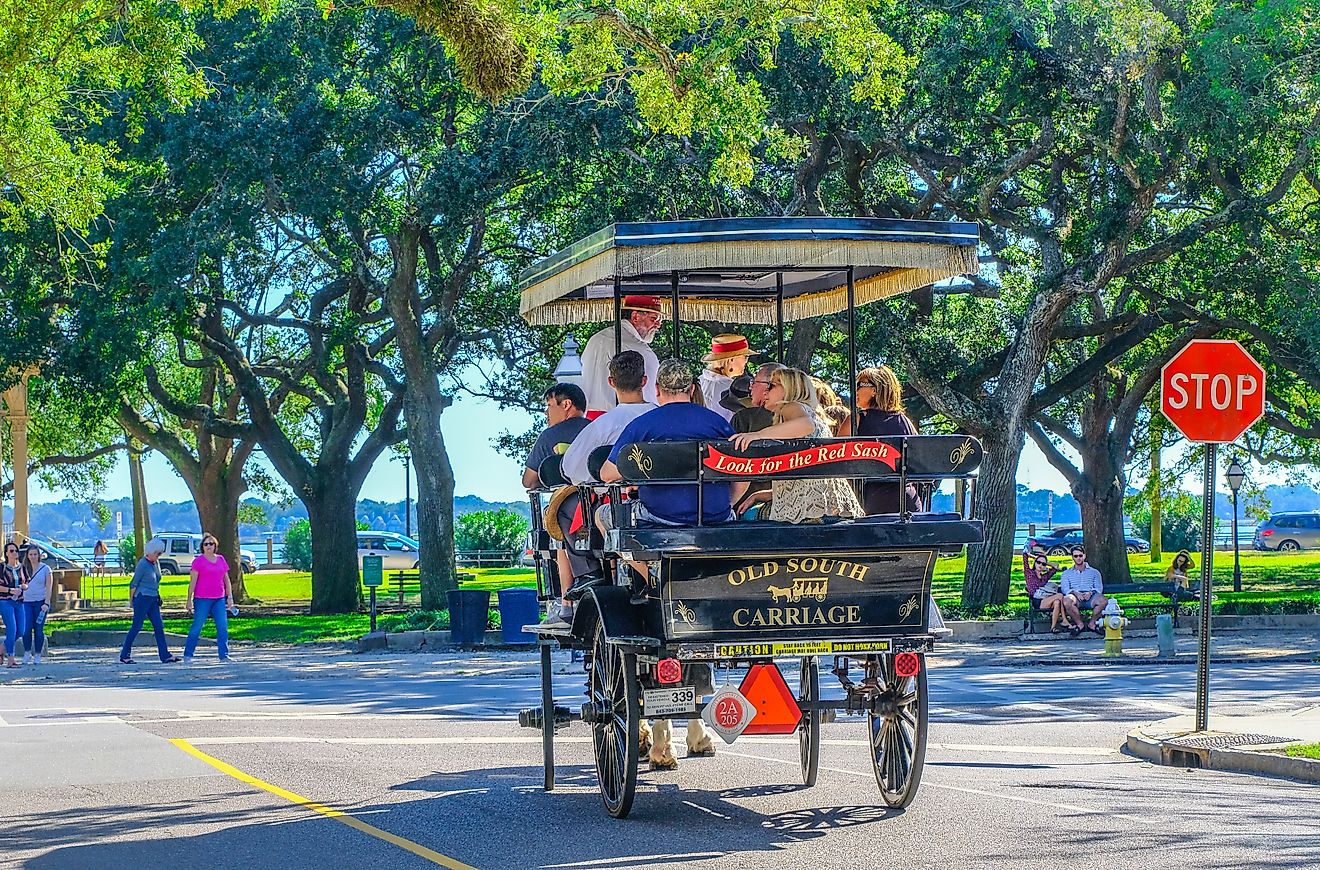
The Most Populated States in America
The United States is a land of vast contrasts: towering mountains, endless plains, bustling metropolises, and quiet towns. But when it comes to population, a few states stand out as home to the lion’s share of Americans. As of 2025, more than half of the US population is concentrated in just seven states, each with distinct identities shaped by their geography, economies, cultures, and demographics.
Explore the seven most populated states in America based on the latest estimates from WorldPopulationReview.com and the U.S. Census Bureau (2023–2025). Take a closer look at what makes these states population magnets; whether it's economic opportunity, immigration patterns, urbanization, or lifestyle appeal.
California

Estimated 2025 Population: 38.9 million
Major Cities: Los Angeles, San Diego, San Jose, San Francisco
California has long reigned as the most populous state in the US, though its lead is narrowing. With nearly 39 million residents in 2025, it holds the equivalent of the entire population of Canada. Much of that population is centered in urban areas like Los Angeles County (the most populated county in the nation) and the Bay Area.
California’s size isn’t just about headcount. It boasts the largest state economy in the US and if it were its own country, it would rank among the top five economies in the world. From Hollywood’s entertainment industry to Silicon Valley’s tech giants, the Golden State attracts dreamers, innovators, and entrepreneurs.
But in recent years, California has seen a slight population decline due to high housing costs, natural disasters, and outmigration to other states. Even so, its diversity, climate, and economic opportunities continue to make it a populous powerhouse.
Key Factors:
-
Home to 10 of the country’s 50 most populous cities
-
Over 27% foreign-born population
-
Strong industries: tech, entertainment, agriculture, and tourism
Texas

Estimated 2025 Population: 31.1 million
Major Cities: Houston, San Antonio, Dallas, Austin
Texas is not only big in size, it’s big in population growth. In 2022 alone, the Lone Star State added more than 470,000 residents, the highest numeric growth of any state. As of 2025, Texas has over 31 million people and is on track to one day overtake California.
What’s fueling this growth? A booming job market, low taxes, and affordable housing compared to coastal states. Texas has positioned itself as a magnet for businesses and families. Major cities like Austin and Dallas have emerged as tech and startup hubs, while Houston remains a leader in energy and healthcare.
Migration, both domestic and international, is driving Texas’ surge. It has one of the youngest and most diverse populations in the country, and its economic output is second only to California.
Key Factors:
-
Nation’s fastest-growing major metro areas
-
Strong domestic in-migration from California, New York, and Illinois
-
Top industries: energy, tech, manufacturing, aerospace
Florida

Estimated 2025 Population: 23.2 million
Major Cities: Jacksonville, Miami, Tampa, Orlando
Florida has cemented itself as a population heavyweight, crossing the 23-million mark in 2025. Known for its beaches, retirement communities, and tourism-based economy, Florida’s appeal spans all age groups. Retirees flock to its warmer weather and lack of state income tax, while younger transplants are drawn by its affordability and growing job sectors.
Miami, a global city with strong ties to Latin America, continues to be a cultural and financial hub. Orlando and Tampa offer growing tech and healthcare sectors, while tourism remains a major economic engine, with Walt Disney World, Universal Studios, and hundreds of beach destinations fueling job growth.
Florida’s population growth has not come without challenges. Infrastructure, traffic congestion, and rising property insurance premiums due to hurricanes and climate risk pose increasing concerns. But the state continues to add more than 1,000 residents a day.
Key Factors:
-
Largest net domestic migration gain in recent years
-
Major retiree destination
-
Fast-growing metro areas like The Villages and Cape Coral
New York

Estimated 2025 Population: 19.6 million
Major Cities: New York City, Buffalo, Rochester, Albany
New York was once the most populated state in America until California overtook it in the mid-20th century. As of 2025, it remains in the top four, but it is one of the few states in the top tier experiencing population decline. New York lost over 500,000 residents between 2020 and 2023, driven by high costs of living, remote work trends, and outmigration to states like Florida and Texas.
Still, New York City remains the largest city in the country, with over 8.4 million people in its five boroughs. The state is also a global cultural and financial powerhouse. Wall Street, Broadway, world-class universities, and a rich immigrant history continue to define its identity.
While upstate regions have seen economic stagnation, NYC and surrounding metro areas keep the state's population buoyant through high birth rates and immigration.
Key Factors:
-
Most densely populated major city (NYC)
-
Long-standing global immigration gateway
-
High cost of living contributes to outmigration
Pennsylvania

Estimated 2025 Population: 12.8 million
Major Cities: Philadelphia, Pittsburgh, Allentown, Erie
Pennsylvania holds steady in fifth place with just under 13 million residents. Its population is more evenly distributed than other top states, with two major urban hubs (Philadelphia in the east and Pittsburgh in the west) anchoring a mix of small towns, farmland, and former industrial centers.
Philadelphia, the sixth-largest city in the country, is a healthcare and education hub. Pittsburgh has transformed from its steel-town roots into a leader in robotics, AI, and tech, thanks to institutions like Carnegie Mellon University.
Unlike Florida or Texas, Pennsylvania’s population growth is relatively stagnant. An aging population, modest immigration rates, and lower birth rates mean slower demographic shifts. However, affordable living costs and strong infrastructure continue to attract steady domestic migration.
Key Factors:
-
Strong university and healthcare systems
-
Historic importance in US industry and politics
-
Slower growth but steady economy
Illinois

Estimated 2025 Population: 12.0 million
Major Cities: Chicago, Aurora, Naperville, Rockford
Illinois, led by the Chicago metro area, remains one of America’s most populous states, though it too has faced population decline in recent years. As of 2025, the state has about 12 million residents, down from its peak in the 2010s.
Chicago, the third-largest city in the US, accounts for much of the state’s population and economic activity. The city is a global financial and transportation hub, known for its architecture, universities, and cultural diversity.
But like New York, Illinois has been losing residents due to high taxes, cost of living, and cold winters. The state saw significant outbound migration to warmer and more affordable states. Still, it remains a core player in national politics, agriculture, and trade.
Key Factors:
-
Chicago metro area is home to nearly 65% of the state population
-
High outbound domestic migration
-
Strong infrastructure, agriculture, and finance sectors
Ohio

Estimated 2025 Population: 11.7 million
Major Cities: Columbus, Cleveland, Cincinnati, Toledo
Rounding out the list is Ohio, with nearly 11.7 million residents in 2025. Ohio’s steady population growth, anchored by urban centers like Columbus, has helped it retain a top-seven position.
Columbus is the fastest-growing large city in the Midwest, thanks to a strong tech sector, a major research university, and significant job creation. Cincinnati and Cleveland also offer competitive housing costs and growing healthcare and logistics sectors.
Ohio remains a bellwether in national politics and a major manufacturing and agricultural state. It has one of the most diverse economies in the Midwest and continues to be a hub for automotive and aerospace industries.
Key Factors:
-
Affordable cost of living and business-friendly environment
-
Growing cities like Columbus bucking regional trends
-
Critical swing state in US elections
Why These States Matter

Population numbers matter. They shape federal funding, political representation, business investment, and infrastructure development. The states on this list account for:
-
More than half of the entire US population
-
The majority of the nation’s GDP
-
Key electoral votes in presidential elections
-
Centers of immigration, cultural influence, and job creation
These states tell the story of America’s shifting demographics: movement from coasts to the Sun Belt, the rise of megacities, the aging of certain regions, and the resurgence of tech hubs in surprising places.
The States Shaping America’s Population Future

The most populated states in America represent the economic engines, cultural capitals, and demographic crossroads of the nation. Whether it’s Texas with its booming cities, Florida with its influx of new residents, or California’s enduring influence on global culture, these seven states shape the future of the country.
As trends in migration, technology, and climate continue to evolve, so too will the population map of America. But for now, these are the states leading the way in size, influence, and impact.
Most Populated US States (2025)
| Rank | State | Estimated Population (2025) | Largest City | Population Trend |
|---|---|---|---|---|
| 1 | California | 38.9 million | Los Angeles | Slight decline |
| 2 | Texas | 31.1 million | Houston | Rapid growth |
| 3 | Florida | 23.2 million | Jacksonville | Rapid growth |
| 4 | New York | 19.6 million | New York City | Declining |
| 5 | Pennsylvania | 12.8 million | Philadelphia | Stable |
| 6 | Illinois | 12.0 million | Chicago | Declining |
| 7 | Ohio | 11.7 million | Columbus | Modest growth |
Frequently Asked Questions
What is the fastest-growing state in the US?
Texas and Florida lead the pack in raw population growth. Utah and Idaho have high percentage growth but smaller base populations.
Which state has the largest city?
New York, with New York City’s population of over 8.4 million, remains the most populous city in the country.
Is California losing population?
Yes. California has seen modest declines in recent years, particularly in major urban centers, due to housing costs and outmigration.
Why are people moving to Florida and Texas?
Lower taxes, warmer climates, business opportunities, and more affordable housing are key drivers.
What states are seeing the biggest declines?
New York, Illinois, and California have experienced net population losses over the past several years.







